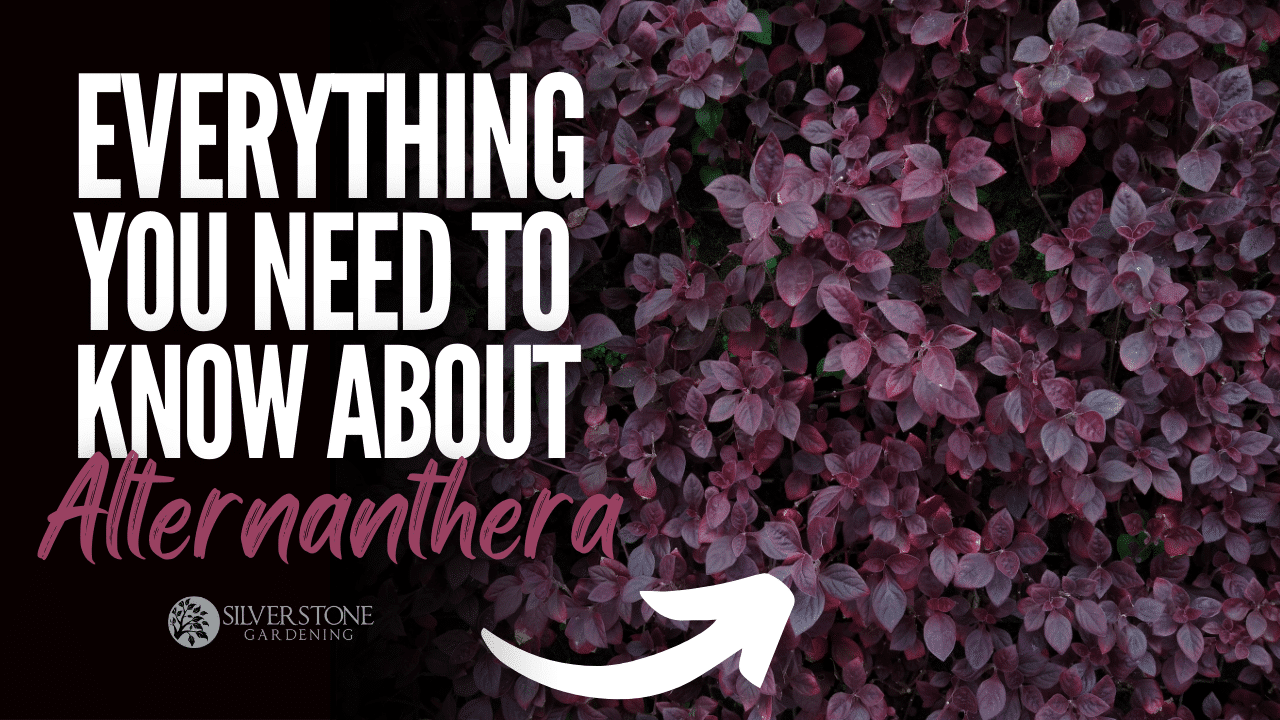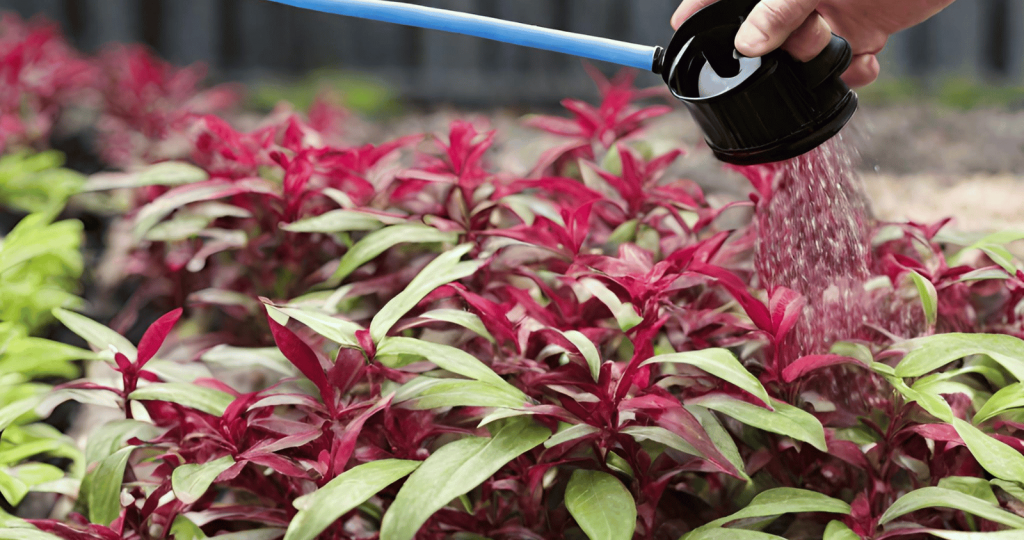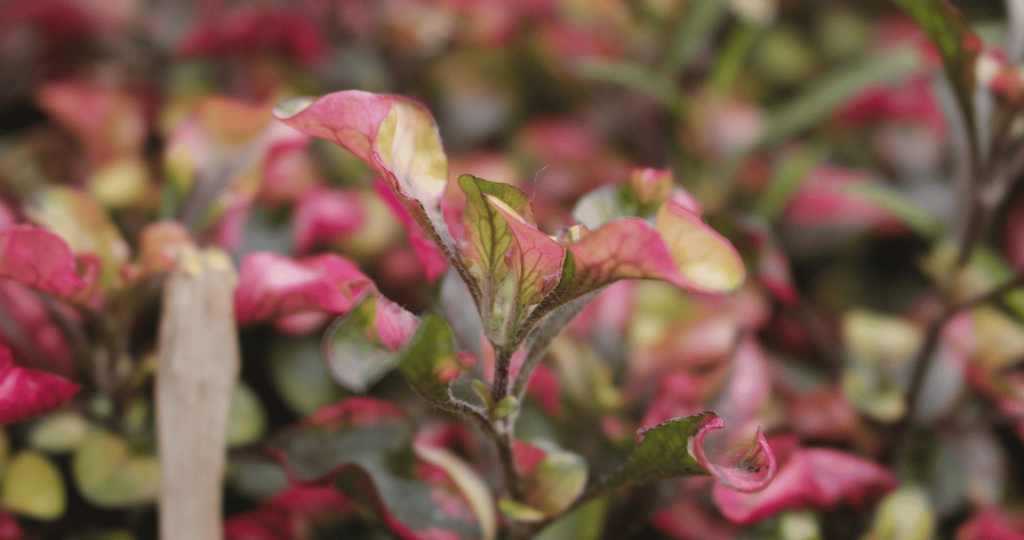
Alternanthera is a diverse and visually striking genus of plants that can bring an array of colors to your garden. Whether you’re a seasoned gardener or just starting, Alternanthera’s versatility and low-maintenance nature make it an excellent choice for various landscaping purposes. With 80 to 200 species to choose from, you can find that these plants thrive in both sun and shade, allowing you to add vibrant hues to any corner of your garden. These plants are known for their unique foliage, with leaves ranging from deep burgundy to bright green, creating a stunning contrast when planted together. Additionally, Alternanthera’s ability to withstand drought and adapt to different soil types makes it an ideal choice for those looking for an effortless yet captivating garden.

Varieties of Alternanthera
With over 80 recognized species, this plant offers a wide range of choices for gardeners. Some popular varieties include:
- Alternanthera Little Ruby: Known for it’s deep burgundy foliage and low spreading habit. This is a hardy and very popular plant in Australian gardens.
- Alternanthera ficoidea (Joseph’s Coat): Known for its multicolored foliage, displaying shades of green, red, yellow, and pink. This variety adds a vibrant and eye-catching splash of color to any garden.
- Alternanthera dentata (Purple Knight): Renowned for its deep purple leaves, it adds a bold and dramatic touch to any garden. Another popular variety is Alternanthera reineckii (Cardinalis), which features vibrant red leaves that can add a pop of intense color to a garden.
- Alternanthera brasiliana (Brazilian Joyweed): Featuring vibrant green leaves, this variety is celebrated for its ability to withstand various weather conditions.
- Alternanthera dentata (Ruby Leaf): Another popular variety which features deep burgundy leaves that create a striking contrast when planted alongside other green foliage plants.
- Alternanthera reineckii (Red Leaf): Also a favorite among gardeners, with its vibrant red leaves that add a dramatic touch to any landscape. W
- Alternanthera amoena (Parrot Leaf): Another attractive option, with its green leaves adorned with purple undersides, creating an interesting contrast.
In Australia, the Little Ruby, Purple Knight and Brazilian Joyweed are particularly popular for their stunning colors and adaptability to local climates. Whether you prefer a more subtle or bold color palette, there is sure to be a variety of Alternanthera that suit your aesthetic preferences.

Leaf colors of Alternanthera
Alternanthera is renowned for its vibrant and diverse leaf colors. The leaves can display shades of green, red, yellow, pink, and purple, depending on the specific variety. Some varieties, like the Alternanthera reineckii, have leaves that start off green and gradually turn a deep red as they mature. Others, like Alternanthera dentata, have leaves that are a vibrant yellow, adding a pop of brightness to any garden. Alternanthera ficoidea ‘Partytime’ is a popular choice for its striking pink and green variegated leaves, creating a playful and whimsical look. No matter which variety you choose, the diverse leaf colors of Alternanthera are sure to add visual interest and beauty to any landscape.
Nature of Alternanthera: Evergreen, Annual, or Hardy?
While some may exhibit evergreen characteristics in warm climates, they are generally not considered hardy in colder climates. This means that they will not survive harsh and regular frosts and should be treated as annuals in those areas. However, they can be grown as perennials in warmer regions where they can withstand mild winters.

Ease of Cultivation: Is Alternanthera Easy to Grow?
Yes, it is relatively easy to grow. Alternanthera plants are known for their resilience and they can tolerate a wide range of soil types, from sandy to clayey, and can withstand hot climates if watered regularly.
Preferred Conditions for Alternanthera
Sun, soil, and weather
Aternanthera thrive in full sunlight but also tolerating partial shade. When selecting a location, aim for well-draining soil with a slightly acidic to neutral pH. These plants are adaptable to different soil types, including sandy and loamy soils, as long as there’s proper drainage. In terms of climate, it prefers warm and tropical conditions, making it well-suited for many regions in Australia.
Sunlight Requirements
For optimal growth, this plant typically needs at least 6 hours of direct sunlight per day. If the plant doesn’t receive enough light, you may notice signs such as reduced growth, leggy stems, and less vibrant foliage. Therefore, it is crucial to choose a location for planting that receives ample sunlight.

Drought tolerance and watering needs
Are Alternantheras Considered Drought-Tolerant?
While Alternanthera can withstand some drought conditions once established, it generally prefers consistently moist soil. Adequate watering is crucial, especially during dry periods. Without proper watering, the plant may become stressed and exhibit signs of wilting or leaf drop.
If your Alternanthera is wilting water immediately, they will often recover if you get water on them quickly, but will die if left too long without water.
It is important to keep the soil evenly moist, but not waterlogged, to ensure the health and vitality of this plant. Regularly checking the moisture level of the soil and adjusting the watering schedule accordingly is vital for the plant’s overall well-being.
Weekly Watering
To maintain moisture, it generally needs around 25–30 mm of total water per week. Adjust this based on local climate conditions and soil moisture retention. In extremely hot and dry climates, it may be necessary to increase the amount of water to prevent the plant from drying out. Conversely, in cooler and more humid climates, it may be necessary to decrease the amount of water to avoid waterlogging the soil. By regularly monitoring the moisture level of the soil and adapting the watering schedule accordingly, the Alternanthera will be able to thrive and maintain its overall well-being.
Indoor vs. outdoor cultivation
While Alternanthera is primarily an outdoor plant, some varieties may be suitable for very well lit indoor spots. If atempting to grown indoors place next to a large window so the plant gets some direct sunlight through the day. Additionally, providing adequate drainage in containers is essential to prevent waterlogging and root rot. Regular fertilisation, as per the fertilising guide below, will also help a lot with the reduced light condition. Ultimately, whilst they have beautiful foliage most varieties are going to struggle in indoor conditions.

Propagation Methods: Growing Alternanthera from Cuttings and Seeds
Growing from cuttings
You can easily propagate Alternanthera from cuttings. Place the cuttings in well-draining soil ensuring they have a node (where leaves and roots emerge). Use a rooting hormone if you have access to some to help root formation in your cuttings. Keep the soil consistently moist until the cuttings establish roots, use a liquid fertiliser like Roots to encourage those roots to grow faster and stronger. Once the roots have developed, you can gradually reduce the watering frequency. It’s important to keep the cuttings in a warm and humid environment to encourage healthy growth.
Growing from seeds
Starting Alternanthera from seeds involves sowing them in a seed-starting mix. Keep the seed-starting mix consistently moist until the seeds germinate. Once the seedlings have developed a few leaves, you can transplant them into individual pots or a garden bed. Provide them with ample sunlight and water regularly to promote their growth. It’s important to note that growing from seeds may take longer than propagating from cuttings, but it can be a rewarding and cost-effective method of expanding your Alternanthera collection.

Growth rate and height
Speed of Growth
This plant tends to grow relatively quickly, especially under favorable conditions. Exact growth rate will depend on the variety and how suitable the conditions are. In good conditions Alternanthera Little Ruby can grow 40-60cm in a year, Altenanthera dentata may grow up to 1m in a year. Its fairly rapid growth rate makes it an ideal choice for filling in empty spaces in your garden or creating a vibrant border.
Height Growth
The height of Alternanthera varies by species and variety but can range from 30cm to 1 meter in a year on average. Some species of Alternanthera, such as Alternanthera dentata, can grow up to 1 meter in just a year, making it a fast-growing plant for filling in empty spaces in your garden.

Pruning Alternanthera
Pruning for Alternanthera will depend a lot on your goals for the plant.
Frequency and timing
Thick boarders: If you want a thick boarder plant pruning is essential to keep it in shape and encourage bushier growth. For beginners, a good rule of thumb is to prune every 4 weeks during the growing season, from late spring to early autumn.
Stand alone plants: If you have it on its own, like in a pot or filling in a bare spot in your garden, then a single annual prune is likely all that will be needed.
Tools for pruning
All you will need to prune Alternanthera is a hedge trimmer or set of sheers. For regular pruning simply hedge to the desired shape. For an annual prune focus on removing dead or leggy stems to promote a more compact and visually appealing appearance.
Soil Improvement for Alternanthera
Ideal Soil Type
Alternanthera prefers well-draining soil. If your soil is too sandy, consider incorporating organic matter, like compost, to enhance water retention. For clayey soil, adding sand and organic matter can improve drainage.
Fertilising Alternanthera
Alternanthera often don’t need fertilisation if the soil conditions are perfect. However, many people may not have those perfect conditions so these products will help.
First things first, make sure your Alternanthera is getting a full 25-30mm of water each week. If it is not getting enough water no fertiliser will be able to overcome that problem.
If you want to increase drought tolerance: Seavival, AquaTurf and Roots are the way to go. AquaTurf will help water penetrate into the soil allowing the plant to make the most of the water that is there. Roots will help encourage healthy root growth which is essential in dry and hot conditions. Finally Seavival will help the overall health of the plant, increasing it’s tolerance for any stress including heat and drought. Apply every 4 weeks.
If you want to increase leaf growth: Nourish is a liquid fertiliser that will give the plant the nutrients its needs to grow quickly, without over feeding the plant. If you are wanting rapid growth then apply every 2 weeks. Here is another option for an awesome liquid fertiliser and soil conditioner.

Pests and diseases
Common Pests
Aphids and spider mites are common pests that can affect Alternanthera. For beginners, using insecticidal soap or neem oil can help control these pests. Here is where you can find some neem oil.
Snails can also hide under Alternanthera and eat the leaves, simple snail baits should do the trick.
Common Diseases
Whilst not very common fungal diseases, such as powdery mildew, may affect Alternanthera. (Here is an organic fungicide that will help with Powdery Mildew.) Adequate spacing and good air circulation can prevent such issues. If diseases persist, consider using fungicides.

Diagnosing Issues: Why is My Alternanthera Dying?
Several factors could contribute to the decline of Alternanthera. Common issues include overwatering, inadequate sunlight, or poor soil drainage. Assess the plant’s environment, adjust watering practices, and ensure it receives the required sunlight for a potential revival.
Common Mistakes with Alternanthera
- Inadequate Light: You will know this by leggy growth. Ensure your alternanthera receives sufficient sunlight to maintain vibrant colors and healthy growth.
- Overwatering: While consistent moisture is vital, avoid overwatering to prevent root rot.
- Neglecting Pruning: Regular pruning is essential for a neat and visually appealing display.
Additional Questions About Alternanthera

Nature of Alternanthera: Herb or Shrub?
Alternanthera falls under the category of herbaceous plants. While it has a bushy and compact growth habit, it is not considered a shrub. This distinction is important for understanding its care requirements and growth patterns. Herbaceous plants, like Alternanthera, have soft, flexible stems and typically die back to the ground during harsh winters. This means that they require less maintenance compared to shrubs, which have woody stems and maintain their structure year-round.
Alternanthera as a Tropical Plant
Yes, Alternanthera is indeed a tropical plant. It thrives in warm climates and is well-suited for tropical regions, making it a popular choice for gardens in places like Australia. The vibrant colors and lush foliage of Alternanthera make it a perfect addition to any tropical garden. Its ability to tolerate high heat and humidity makes it a resilient choice for hot climates. Gardeners in Australia and other tropical regions can enjoy the beauty of Alternanthera year-round, as it can withstand the harsh conditions of these areas. With proper care and attention, a garden filled with Alternanthera can create a stunning and inviting space for relaxation and enjoyment.

Uses of Alternanthera
Alternanthera serves various purposes in gardening and landscaping. While it is primarily grown for its ornamental value, adding a burst of color to gardens, some varieties can also be used for ground cover. For example, in landscaping, Alternanthera can be used as a colorful border plant to delineate different sections of a garden or to create eye-catching patterns and designs. Additionally, some varieties of Alternanthera can be planted as ground cover to prevent soil erosion and suppress weed growth, making it a practical and visually appealing choice for gardens and landscapes.
Edibility and Poisonous Varieties
While Alternanthera is not typically grown for consumption, some varieties may have culinary applications. For example, Alternanthera dentata, also known as “Joseph’s Coat,” is sometimes used in traditional dishes in certain cultures. Alternanthera caracasana, commonly known as Sissoo spinach or Brazilian spinach, is recognized for its potential health benefits. Rich in nutrients, it’s believed to have antioxidant properties, contribute to heart health, and support overall well-being.
However, it is important to note that not all varieties of Alternanthera are safe for consumption. It’s essential to consult with a healthcare professional for personalized advice. Some varieties can be toxic if ingested, so it is crucial to do thorough research and consult with experts before using any variety of Alternanthera for culinary purposes. Notably, some species, like Alternanthera ‘Party Time,’ are grown for ornamental purposes and are not intended for consumption. Always exercise caution and research before consuming any plant.
Incorporating Alternanthera into your garden can be a rewarding experience, bringing a burst of color and easy-to-manage beauty. Whether you’re a beginner or an experienced gardener, these tips will help you cultivate a thriving and visually appealing Alternanthera garden.
